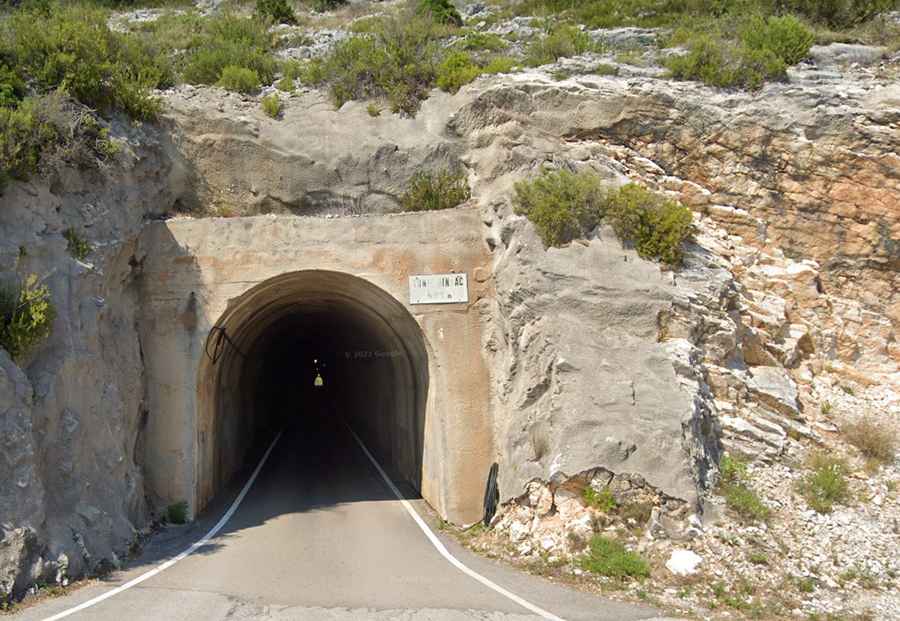The narrow and unlit Tunnel Dingac
Located on the Pelješac peninsula in the region of Dalmatia, in Croatia, Tunnel Dingac will make you feel as if you have entered into a mine with your car.

Where is Tunnel Dingac?
Tucked away on the southern part of the country, near the Adriatic Sea, the tunnel is located on the coastal road from Potomje (a village on Pelješac peninsula famous for its wines) to Trstenik. Although someone passing through a tunnel dug in solid rock can be seem like passing through hell - in the end it is actually waiting for paradise. There’s a million-dollar view at the end of the tunnel, with the endless vineyards of the most famous Pelješac vineyard, steeply descending to the surrounding coastal places. In this rocky terrain, you’ll see vineyards planted on vertiginous slopes of 45 degrees. If you’re coming from Potomje side, you will be stunned by the view that breaks as soon as you get to the other side. You can see fantastic panorama of Mljet and Korčula, with all the small islands. Dingač was officially recognized as Croatia and former Yugoslavia’s first protected wine appellation in 1962.
When was Tunnel Dingac built?
Located in the heart on the Dingač wine region, in the south of the Dalmatian coast, where small and big wineries harvest grapes, the hand dug tunnel was constructed in 1973, paid by the winemakers of the area in order to transport grapes directly. Before construction of the tunnel, the grapes were transported over the 400 m high pass of the mountain by large baskets strapped across donkeys to wineries over the stone ridge that geographically defines this place. But some winemakers continued to use donkeys, as well as horses, during the harvest time because no machines or tractors can come on those steep slopes where truly fascinating vineyards reside.
How long is Tunnel Dingac in Croatia?
The tunnel is totally paved. It’s 400m long. It penetrates the rocky hillside, facing the sea, very narrow, and leading directly to the heart of the Dingač vineyards. Unlit and wide enough only for one-way traffic, the local rules are simple: upon entering the tunnel, if there are no headlights coming the opposite way, one may progress; approaching headlights require drivers to wait. It’s not the best place for those suffering of claustrophobia as it’s narrow and dark.